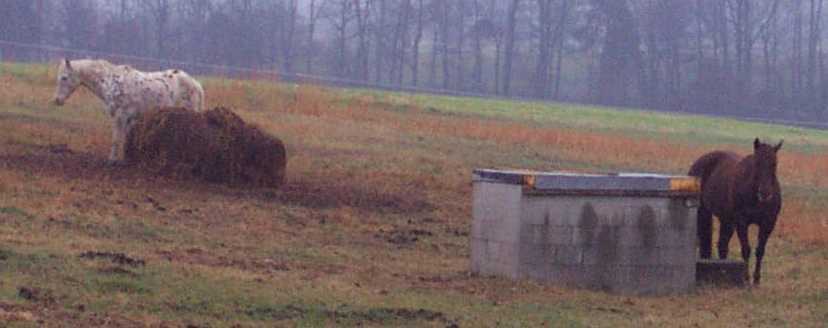General Well Construction Regulations
The following is a summarization of the Kentucky water supply well construction practices and standards. For additional information please contact the Kentucky Division of Water or your local Kentucky certified water well driller.
Water supply wells can only be constructed by Kentucky certified well drillers.
Water supply wells should be properly constructed, modified, and abandoned to prevent contamination of the well and aquifer.
Kentucky certified well drillers are required to submit all information regarding a newly constructed, repaired/modified, or plugged well to the Kentucky Division of Water. This includes information about the depth and the materials used. The well driller must give the well an identification number (AKGWA number) provided by the Kentucky Division of Water. Water well information can be obtained by searching the Kentucky Groundwater Data Repository on the Kentucky Geological Survey website.
The well driller is required to provide you, the well owner, with the following information:
-
A copy of the Uniform Kentucky Well Construction Record if a new well was constructed, or the Uniform Kentucky Well Maintenance and Plugging Record if a well was repaired or abandoned.
-
A copy of the results of bacteriological testing done on the well.
-
Water Well Owner's Guide.
-
A copy of testing results if additional water quality analysis was conducted.
All materials to be used for the construction, modification, or abandonment of water supply wells shall be approved for use in water supply wells. The well driller can not install used, damaged, or contaminated well casing or liner pipe. The well driller must seal the annulus (i.e. area around the well casing) from the bottom of the annulus upward in one (1) continuous operation until the annulus is filled to two (2) feet below the surface or to the point of pitless adapter attachment.
The well driller must construct the well in a location that protects groundwater quality and public health and safety, and takes into account local or site-specific geologic formations and groundwater conditions. The well must be located at least five (5) feet from any building projections, such as roofs or other overhangs. And a well cannot be constructed in a pit or a basement.
Below are the mandated setback distances for a variety of possible contamination sources of your well and groundwater. No well should be closer than these distances to each of the following sources of contamination:
-
100 feet of Leaching Pit; or Petroleum Storage Tank
-
75 feet of a Grave or Cemetery; Manure Pile, Animal Waste Storage, or Confined Animal Feeding Operation; or Wastewater Treatment Disposal System
-
70 feet of a Side Wall of Lateral Trench, Bed, or Lagoon; or Geothermal - Closed Loop, Un-grouted
-
50 feet of Water Supply Well ; Septic Tank or Sewer Line; or Livestock Pen, Corral, or Stable
-
25 feet of Surface Water Body
-
20 feet of Geothermal - Closed Loop, Grouted; or Abandoned Water Well Grouted
-
10 feet of Property Lines, Utility Lines, or Roadway Right of Way

The well above is violating the minimum 50 feet distance requirement for a corral.
(Image courtesy Glynn Beck, Kentucky Geological Survey)
Constructing A Well In A Flood Zone
If your well must be constructed in a flood zone, because an alternate site does not exist, the well driller must install the casing a minimum of two (2) feet above the maximum known flood elevation.
Methane Gas In Your Water Well
If during construction it is discovered that your well contains naturally occurring methane, a vent shall be installed above the top of the well and above known flood elevations, with the open end turned down, and the open end shall be covered with a durable mesh screen. Below is a video of possible methane degassing into a well. WARNING: Methane gas is flammable and caution should be taken when methane is suspected to be present in your well.
https://www.youtube.com/watch?v=O5JcGrJV2b4
Pit and Pitless Adaptor Modifications
If a pitless adaptor is installed in your well it must be done in such a manner as to provide a leak-proof seal. If maintenance is being conducted on a well with a pit, the Kentucky certified well driller must eliminate the existing well pit and extend the casing a minimum of four (4) inches above the finished ground surface. To eliminate the well pit, the flooring and the walls of the pit will be broken and removed, and the pit will be filled with compacted earth.
Abandoning and Plugging A Water Well
When a water well is abandoned, it must be plugged by a Kentucky certified well driller in a way that prevents surface water or contaminants from infiltrating the aquifer. The Kentucky certified well driller must report the plugging of a well to the Kentucky Division of Water.
